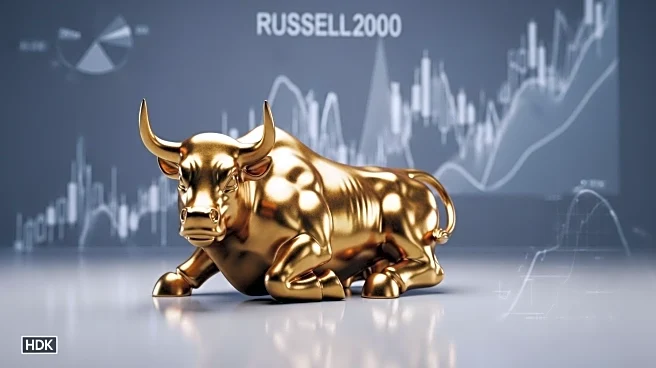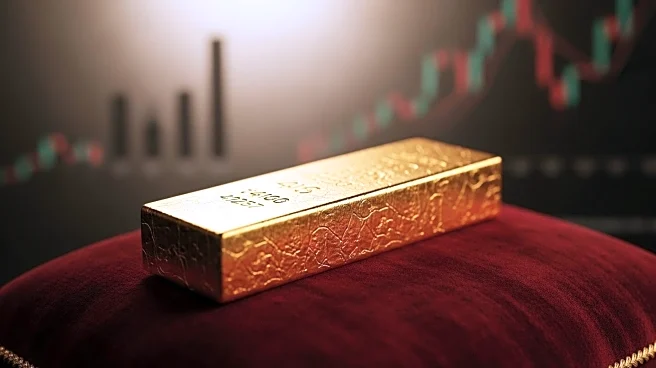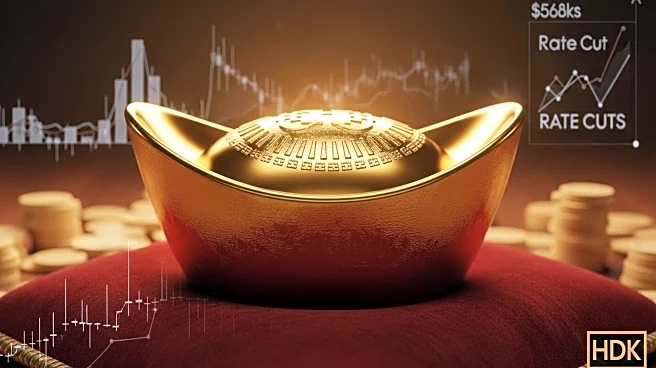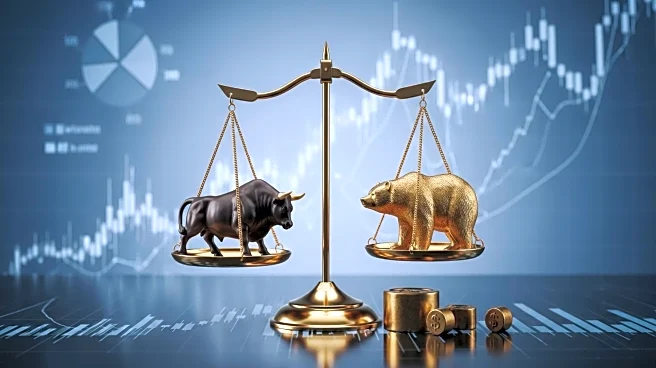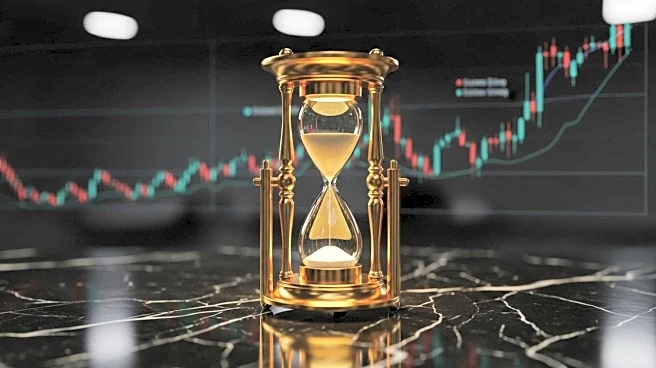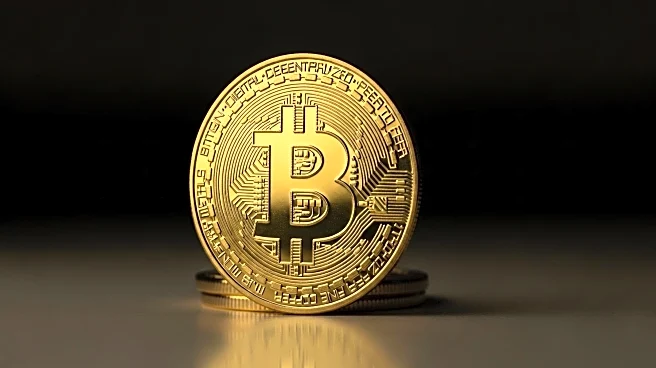What's Happening?
The price of gold has reached a record high of $4,000 per ounce, marking a significant increase from previous records. This surge follows a series of price increases over the past two years, with gold surpassing $3,000 per ounce in March. The current price is nearly 94% higher than it was in January 2024, when gold was priced at $2,063.73 per ounce. This increase is attributed to factors such as inflation and geopolitical instability, which are expected to continue driving the price upward. Despite the high cost, there are still opportunities for investors to engage with gold through fractional investments, dollar-cost averaging, and exploring various gold investment types such as gold IRAs and ETFs.
Why It's Important?
The rising price of gold is significant for investors as it represents a stable asset amidst economic uncertainty. As inflation and geopolitical tensions persist, gold is seen as a safe haven, prompting increased interest from investors. Those who invested earlier are benefiting from the price surge, while new investors are encouraged to explore cost-effective methods to enter the market. The potential for further price increases makes gold an attractive option for portfolio diversification, offering protection against market volatility. However, investors must act promptly to capitalize on current opportunities before prices rise further.
What's Next?
Investors are advised to consider fractional gold investments and dollar-cost averaging strategies to mitigate the impact of high prices. As the Federal Reserve adjusts to a higher inflation environment, and official sectors continue purchasing gold, prices are expected to rise further, potentially reaching $4,400 per ounce in the first half of 2026. Investors should research different gold investment types and consult with financial advisors to make informed decisions. The ongoing economic conditions suggest that gold will remain a valuable asset, but timely action is crucial to avoid missing out on favorable investment opportunities.
Beyond the Headlines
The record-breaking price of gold highlights broader economic challenges, including inflation and geopolitical instability. As traditional investment avenues face uncertainty, gold's appeal as a stable asset grows. This trend may influence investment strategies, encouraging diversification and risk management. Additionally, the rise in gold prices could impact industries reliant on the metal, such as jewelry and electronics, potentially leading to increased costs for consumers. The situation underscores the importance of understanding global economic dynamics and their influence on investment decisions.




